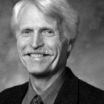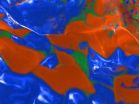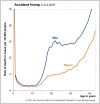(Press-News.org) Boston, Mass. (Aug. 19, 2011)—Researchers at Harvard Medical School have discovered that structural elements in the cell play a crucial role in organizing the motion of cell-surface receptors, proteins that enable cells to receive signals from other parts of the organism.
This discovery, published in the Aug. 19 issue of the journal Cell, fills a fundamental gap in the understanding of how cells relate to biochemical signals, including pharmaceuticals, and could have profound implications for drug development and the treatment of cancer and other diseases.
The findings are already prompting the design of a new lecture on cell signaling in one basic biochemistry course at HMS.
"We found that the way the receptors are organized in the membrane and the way they move around are controlled by the cytoskeleton," said Khuloud Jaqaman, instructor in the Department of Systems Biology at HMS and first author of the study. This dynamic organization promotes signaling function by encouraging receptors to cluster, even if briefly, she said.
Jaqaman and Gaudenz Danuser, HMS professor of cell biology, working with Sergio Grinstein from the Hospital for Sick Children in Toronto as well as colleagues at the University of Alberta, Edmonton, studied the motion of CD36, a receptor in human macrophages, a type of white blood cell that plays a role in immune response. CD36 detects oxidized LDL (oxLDL), a lipoprotein implicated in atherosclerosis.
Receptors are like the antennas in a cell's communication system with the world outside their membrane. The cytoskeleton, which includes a fine meshwork of actin fibers and an array of radiating microtubules, gives the cell its shape.
Like many receptors, CD36 can't work alone; a group of receptors must cluster together to send a signal into the cell. Until now, very little was known about how those functional groups of receptors formed. The cell and receptors were thought to wait "at rest" until a chemical signal happened to appear, causing receptors to coalesce.
This study reveals a much more dynamic "before" picture, with structures that precondition the cell to respond to signals. The researchers say that their work clearly demonstrates how "resting" receptor movements are functionally relevant to the transmission of signals into the cell.
Grinstein, a senior scientist at Toronto's Hospital for Sick Children whose interests include understanding how macrophages work, approached Danuser for imaging and analysis expertise. Grinstein wanted to study CD36 at the single-molecule level in live cells and in real time under a microscope.
Using an automated particle-tracking algorithm she had developed to overcome the challenges of imaging such minute, complex interactions, Jaqaman analyzed these single-molecule movies to dissect the receptor behavior and its regulation.
The movies reveal three kinds of motion by the receptors, which are sensitive to strands of the cytoskeleton's actin meshwork adjacent to the cell surface. As receptors roam about, they bump into these strands, slowing, stopping or changing direction. Some wander freely about the surface of the cell. Others become temporarily stuck inside a pocket of the mesh, as if trapped in a cage. Finally, some of the receptors travel linear paths.
These paths follow elongated "corridors" alongside the cell's microtubules, another part of the cell's cytoskeleton, radiating in more-or-less straight lines from the nucleus.
How the corridors form remains a mystery. The researchers suspect that they emerge from interactions between microtubules and actin, which remove actin strands from the path of the receptors.
In these narrow corridors free of actin strands, receptors scurry to and fro with more freedom, regularly bumping into one another, forming clusters that stick together fleetingly and then drift apart.
The researches suspected that these pre-formed clusters aid in signaling, so to test that theory, they disrupted the cytoskeleton. Sure enough, when the corridors disappeared, the cell no longer responded effectively to oxLDL.
Jaqaman compares the receptors in linear paths to people in the hallway of an office building. "People in the hallway are much more likely to bump into and chat with colleagues than people who stay in their offices all day, like receptors trapped in actin cages, or people wandering around the city, like receptors wandering freely around the cell surface," she says.
Jaqaman and Danuser stress that the mechanical nature of these structures—and how they relate to the cell's chemical and mechanical environment—may be key to understanding how healthy and unhealthy cells function, replicate and grow. For example, it is well known, they said, that tumors are mechanically stiffer than normal tissues. In one provocative scenario, Danuser speculates that the broad variation in the mechanical properties between cancer tissues in different patients may be a key reason for the variable success of cancer chemotherapies that target cell-surface receptors.
"While most current research focuses on the study of oncogenes and tumor suppressors, it might be just the intrinsic change in cancer-tissue mechanics that leads to the change of signaling," Danuser said. "I think we absolutely have to look into that."
###
This work was supported by Heart and Stroke Foundation of Ontario, Canadian Institutes of Health Research, and the National Institutes of Health.
Molecular meet and greet
Single-molecule imaging reveals how cells prepare to interact with the world
2011-08-19
ELSE PRESS RELEASES FROM THIS DATE:
Kidney drugs hampered by high blood phosphate
2011-08-19
Washington, DC (August 18, 2011) — High blood phosphate levels can set chronic kidney disease (CKD) patients on a rapid path to kidney failure, according to a study appearing in an upcoming issue of the Journal of the American Society Nephrology (JASN). To make matters worse, phosphate appears to interfere with the effectiveness of important kidney medications.
The kidneys of patients with CKD cannot efficiently get rid of wastes such as excess phosphate in the blood. As a result, the kidneys become overloaded with phosphate. Carmine Zoccali, MD (CNR-IBIM, Clinical Epidemiology ...
New 'bionic' leg gives amputees a natural gait
2011-08-19
A new lower-limb prosthetic developed at Vanderbilt University allows amputees to walk without the leg-dragging gait characteristic of conventional artificial legs.
The device uses the latest advances in computer, sensor, electric motor and battery technology to give it bionic capabilities: It is the first prosthetic with powered knee and ankle joints that operate in unison. It comes equipped with sensors that monitor its user's motion. It has microprocessors programmed to use this data to predict what the person is trying to do and operate the device in ways that facilitate ...
Robust preschool experience offers lasting effects on language and literacy
2011-08-19
Preschool teachers' use of sophisticated vocabulary and analytic talk about books combined with early support for literacy in the home can predict fourth-grade reading comprehension and word recognition, new research from Vanderbilt University's Peabody College finds.
The findings, published in Child Development and included in a review article in the August 19, 2011 edition of Science, present evidence that there are lasting, complex and mutually reinforcing effects that flow from strong early childhood classrooms.
"We need to take very seriously the importance ...
Parents misled by advocates of single-sex education
2011-08-19
There is no scientific basis for teaching boys and girls separately, according to Lise Eliot from The Chicago Medical School. Her review reveals fundamental flaws in the arguments put forward by proponents of single-sex schools to justify the need of teaching teach boys and girls separately. Eliot shows that neuroscience has identified few reliable differences between boys' and girls' brains relevant to learning or education. Her work is published online in Springer's journal Sex Roles.
The first issue Eliot highlights is that single-sex school advocates often claim differences ...
Treatment with vitamin C dissolves toxic protein aggregates in Alzheimer's disease
2011-08-19
Researchers at Lund University have discovered a new function for vitamin C. Treatment with vitamin C can dissolve the toxic protein aggregates that build up in the brain in Alzheimer's disease. The research findings are now being presented in the Journal of Biological Chemistry.
The brains of people with Alzheimer's disease contain lumps of so-called amyloid plaques which consist of misfolded protein aggregates. They cause nerve cell death in the brain and the first nerves to be attacked are the ones in the brain's memory centre.
"When we treated brain tissue from ...
Are those liquids explosive?
2011-08-19
A team of researchers from the University of the Basque Country (Spain) has developed a method to determine the chemical composition of liquids seized by police and suspected to be explosive. Some of the samples analysed contained substances hazardous to health, such as methanol and boric acid.
Each year police forces seize tonnes of pyrotechnic substances which, in principle, are for indoor firework manufacturing (i.e. flares or those used in artistic or sporting events), but which also may end up in the hands of violent groups and hooligans.
A group of chemists from ...
Revealed: How sticky egg captures sperm
2011-08-19
Researchers have uncovered exactly how a human egg captures an incoming sperm to begin the fertilisation process, in a new study published this week in the journal Science.
The research identifies the sugar molecule that makes the outer coat of the egg 'sticky', which is vital for enabling the sperm and egg to bind together. Researchers across the world have been trying to understand what performs this task for over thirty years.
The scientists behind this study believe their work could help address some of the previously unexplained causes of human infertility and ...
CSHL neuroscientists show activity patterns in fly brain are optimized for memory storage
2011-08-19
Large-scale imaging shows mushroom body activity patterns are sparse and randomly distributed Cold Spring Harbor, NY – We know from experience that particular smells are almost inseparable in our minds with memories, some vague and others very specific. The smell of just-baked bread may trigger an involuntary mental journey, even if for a moment, to childhood, or to a particular day during childhood. Or it may, more diffusely, remind someone of grandma. How are these associations forged in the brain and how do we remember them? A research team at Cold Spring Harbor ...
Boys reach sexual maturity younger and younger
2011-08-19
This release is available in German.
Boys are maturing physically earlier than ever before. The age of sexual maturity has been decreasing by about 2.5 months each decade at least since the middle of the 18th century. Joshua Goldstein, director of the Max Planck Institute for Demographic Research in Rostock (MPIDR), has used mortality data to prove this trend, which until now was difficult to decipher. What had already been established for girls now seems to also be true for boys: the time period during which young people are sexually mature but socially not yet considered ...
Study raises doubts about value of heart ultrasound before elective surgery
2011-08-19
TORONTO, Ont., Aug. 18, 2011_A new study has found no evidence that patients who had a heart ultrasound known as an echocardiogram before major surgery had improved survival rates one month or one year after their operation.
Some groups of patients actually had worse survival rates, according to Dr. Duminda Wijeysundera, a scientist at the Li Ka Shing Knowledge Institute of St. Michael's Hospital and the Institute for Clinical Evaluative Sciences.
His study, published in the British Medical Journal, adds to a growing body of evidence that echocardiograms may not be ...
LAST 30 PRESS RELEASES:
Scalable and healable gradient textiles for multi‑scenario radiative cooling via bicomponent blow spinning
Research shows informed traders never let a good climate crisis go to waste
Intelligent XGBoost framework enhances asphalt pavement skid resistance assessment
Dual-function biomaterials for postoperative osteosarcoma: Tumor suppression and bone regeneration
New framework reveals where transport emissions concentrate in Singapore
NTP-enhanced lattice oxygen activation in Ce-Co catalysts for low-temperature soot combustion
Synergistic interface engineering in Cu-Zn-Ce catalysts for efficient CO2 hydrogenation to methanol
COVID-19 leaves a lasting mark on the human brain
Scientists use ultrasound to soften and treat cancer tumors without damaging healthy tissue
Community swimming program for Black youth boosts skills, sense of belonging, study finds
Specific depressive symptoms in midlife linked to increased dementia risk
An ‘illuminating’ design sheds light on cholesterol
Who is more likely to get long COVID?
Study showcases resilience and rapid growth of “living rocks”
Naval Research Lab diver earns Office of Naval Research 2025 Sailor of the Year
New Mayo-led study establishes practical definition for rapidly progressive dementia
Fossil fuel industry’s “climate false solutions” reinforce its power and aggravate environmental injustice
Researchers reveal bias in a widely used measure of algorithm performance
Alcohol causes cancer. A study from IOCB Prague confirms damage to DNA and shows how cells defend against it
Hidden viruses in wastewater treatment may shape public health risks, study finds
Unlock the power of nature: how biomass can transform climate mitigation
Biochar reshapes hidden soil microbes that capture carbon dioxide in farmland
Reducing saturated fat intake shows mortality benefit, but only in high-risk individuals
Manta rays create mobile ecosystems, study finds
Study: Mixed results in using lipoic acid to treat progressive multiple sclerosis
Norbert Holtkamp appointed director of Fermi National Accelerator Laboratory
New agentic AI platform accelerates advanced optics design
Biologists discover neurons use physical signals — not electricity — to stabilize communication
Researchers discover that a hormone can access the brain by hitchhiking
University of Oklahoma researcher awarded funding to pursue AI-powered material design
[Press-News.org] Molecular meet and greetSingle-molecule imaging reveals how cells prepare to interact with the world



